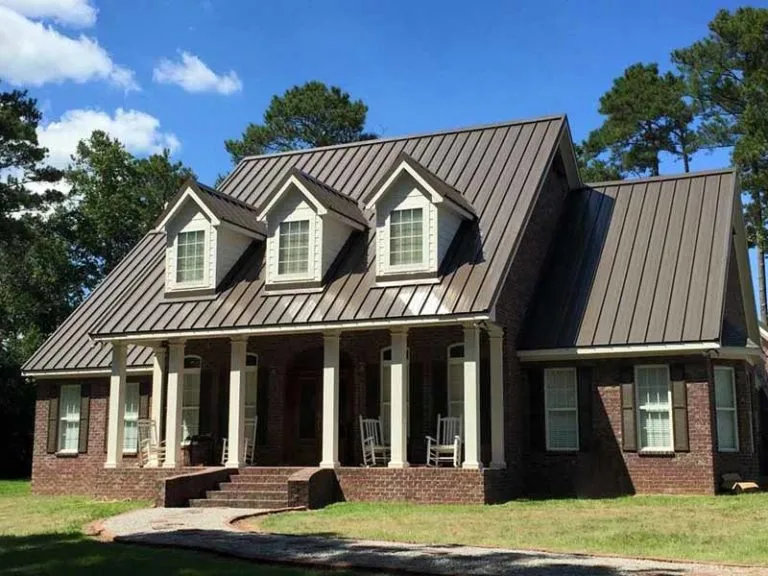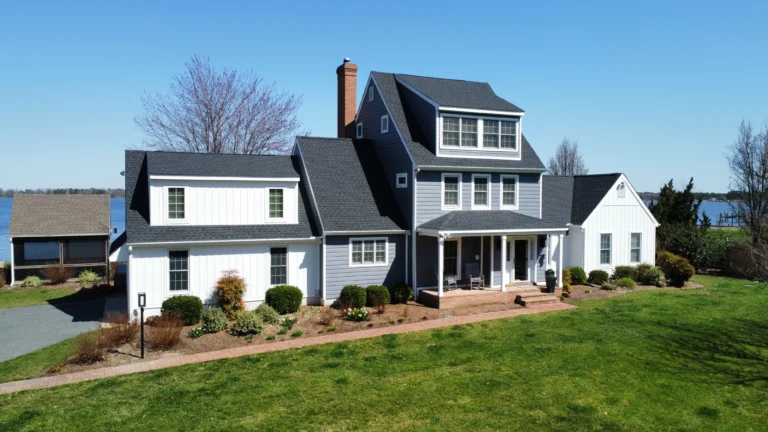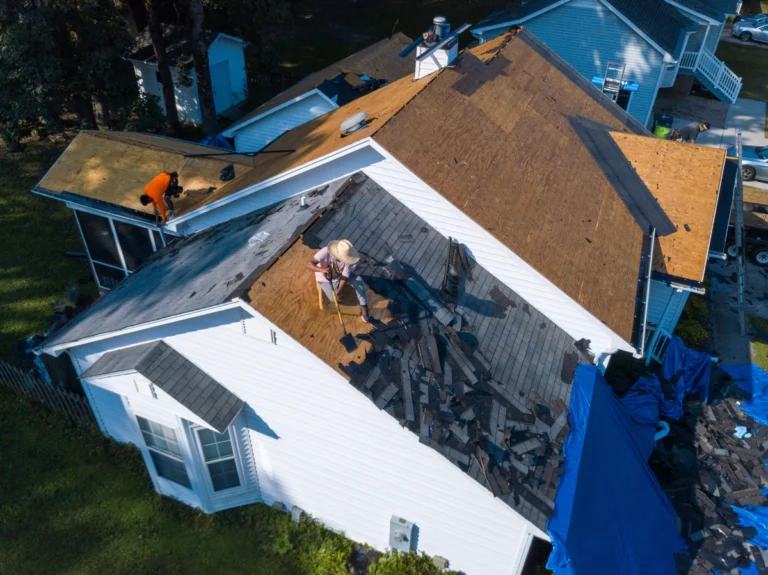A roof is critical in protecting your home and loved ones from the elements. However, like everything else, it has a lifespan influenced by several factors. But how long does a roof last?
In this insightful blog post, we will explore, on average, how long does a roof last, considering various roofing materials and their durability. Discover the key factors determining a roof’s longevity while learning about maintenance strategies to prolong its life.
Always confirm with a professional roofing contractor for expert advice before deciding if you are thinking about a new roof.
Factors That Influence Roofing Lifespan

A typical residential roof replacement amount can be influenced by several factors, including the type of roofing material used, the quality of installation workmanship, and the climate and weather conditions where the home is located.
Roofing Material
One of the most significant factors influencing a roof’s lifespan is its roofing material. Unfortunately, homeowners are left to weigh the pros and cons of each type based on their durability, weather resistance, and overall aesthetics.
Asphalt shingles dominate the residential roofing market due to their affordability and ease of installation; these can last up to 20 years, but premium shingles can last longer. Architectural shingles offer improved durability with a slightly higher price tag but can extend your roof’s life for around 30 years.
If you’re looking for a durable option with minimal maintenance requirements, slate roofs, and concrete roofs have an impressive lifespan of up to 100 years. But clay tile roofs have been the winner for up to 150 years.
Installation Quality
To achieve optimal results from any roofing project, homeowners must select an experienced roofing contractor who has demonstrated their proficiency as professional roofing contractors through successful past installations.
Moreover, they should be up-to-date with building codes and industry standards to identify and address potential issues before they become significant problems.
No matter how high-quality the chosen roofing material may be, a proper installation by skilled professionals using appropriate techniques and equipment is necessary for a roof’s true potential for longevity.
Climate and Weather
Environmental factors such as temperature fluctuations, humidity levels, and sun exposure can impact how long different roofing materials will last.
Extreme weather events like hurricanes or hailstorms can lead to considerable damage and shorten the life expectancy of a roof. For example, asphalt roof shingles, when installed in cooler climates with less sun exposure, have been known to last up to 30 years; however, their lifespan may be reduced by almost half in areas experiencing higher temperatures for extended periods.
Similarly, humidity levels can affect wood shakes and metal roofs – excess moisture could result in corrosion or rot, requiring prompt maintenance and repair efforts.
Average Lifespan of Common Roofing Materials

The average lifespan of asphalt shingles is between 15 to 25 years, while wood shakes can last up to 30 years with proper maintenance.
Asphalt Shingles
Asphalt shingles are the most commonly used roofing material in the United States due to their affordability and ease of installation. On average, asphalt shingles can last 15 to 30 years, depending on several factors.
However, the quality and thickness of the asphalt layer can also affect how long an asphalt roof lasts. That’s why it’s essential for homeowners to regularly inspect their roofs for any signs of wear and tear that require repairs or replacement before significant damage occurs.
Wood Shakes
One of the popular roofing materials for houses is wood shakes. Wood roof shakes are made from cedar, pine, or other types of wood, making them eco-friendly.
The average lifespan of cedar shake roof installations is between 40 and 50 years, with proper maintenance.
Wood shingles are another type of roofing material that lasts up to 30 years with regular maintenance to keep them in good condition. Without regular upkeep, the life expectancy averages 15-20 years.
Metal
Metal roofing is a popular option for homeowners looking for durable and long-lasting roofing materials. The average lifespan of metal roofs ranges from 40 to 70 years, making it an excellent investment.
However, the durability of metal roofs can vary depending on several factors, including the quality and type of metal used in the metal roofing system. A steel metal roof is the most common material used in metal roofing systems and can last up to 50 years with proper maintenance.
Metal roofs are also great options for safety concerns as they do not attract lightning strikes like other materials might. With various types of metal available for homeowners, such as zinc-coated steel or aluminum, plenty of high-quality options for flat roofs exist for those seeking lasting durability from their roofs.
Clay or Concrete Tiles
Clay tiles or concrete tiles are highly durable and long-lasting roofing tiles and materials. They have an expected lifespan of 50 to 100 years, longer than most common roofing materials.
Proper maintenance ensures a tile roof can last even longer than expected. Regular inspections and upkeep can help identify minor issues before they become significant problems, extending the life of slate tiles on your roof.
Signs Your Roof Needs Repair or Replacement and Maintaining Your Roof’s Lifespan

Regularly maintaining your roof is crucial to extend its lifespan. Signs that your roof needs repair or replacement include leaks, missing or broken shingles, and visible damage to the top, which could mean it is time to replace your roof.
Regular inspections can help detect problems early on and significantly increase your roof’s lifespan. Inspect your roof at least twice yearly, once in spring and another in fall when extreme weather conditions are more common.
While maintaining the roofing material is vital, proper ventilation in your attic also helps prevent premature wear and tear.
Conclusion
In conclusion, understanding the average lifespan of a roof and the factors that impact its durability is crucial for homeowners. From asphalt shingles to slate roofing, different materials have different lifespans.
Proper maintenance and regular inspections can help prolong a roof’s lifespan and prevent costly repairs or replacements. So whether you reside in New England, Michigan, or California, watch for warning signs indicating your roof needs repair or replacement.
It is important to contact a professional roofing company for expert advice.




